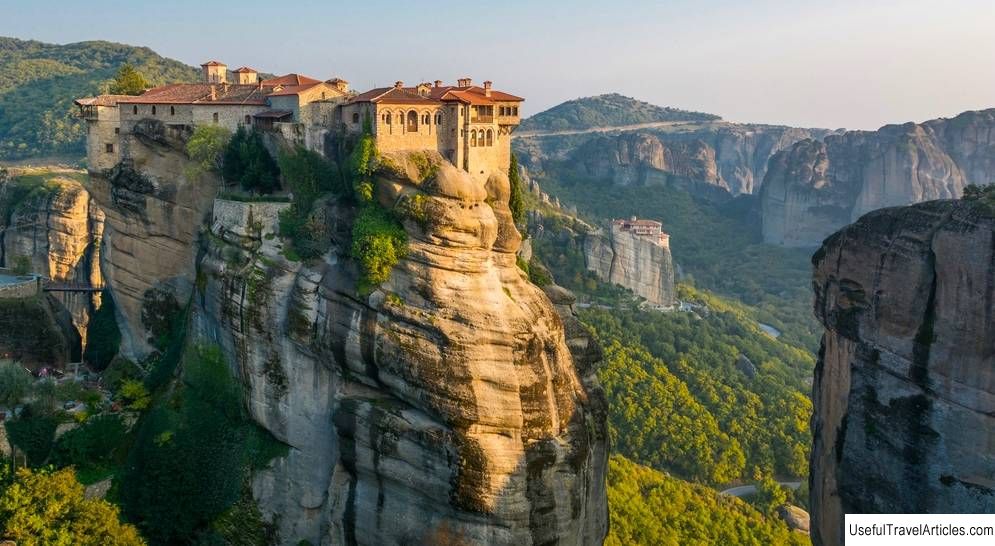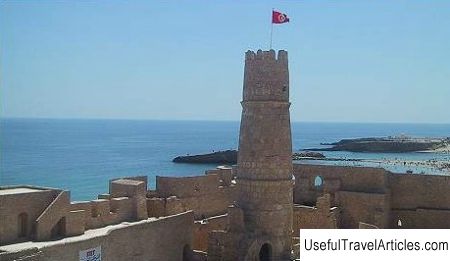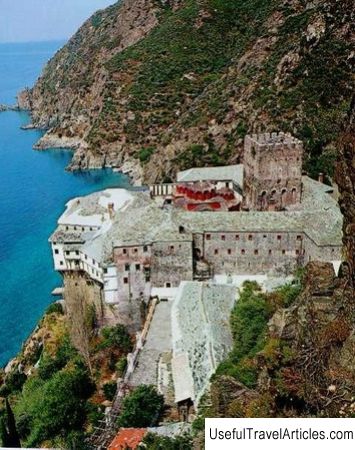Meteora monasteries description and photos - Greece: Kalambaka
Rating: 8,4/10 (6894 votes) 
Meteora monasteries description and photos - Greece: Kalambaka. Detailed information about the attraction. Description, photographs and a map showing the nearest significant objects. The title in English is Meteora. Photo and descriptionJust a few kilometers from the Greek city of Kalambaka, there is the famous Meteora - one of the largest and most revered monastic complexes in Greece. The monasteries are nestled on the tops of the Thessalian Plain, proudly towering on the northwestern edge of the Plain, and enormous steep rocks of incredible beauty. These rocks themselves are a fairly rare geological phenomenon and were formed about 60 million years ago. Actually, it is precisely due to their unique location that the monasteries got their name, because in translation from the Greek the word “meteors” literally means “soaring in the air.” Most researchers believe that the first monastery of the Holy Spirit was founded here in the middle of the 10th century by a certain Barnabas. Although it is likely these inaccessible rocks were chosen by hermits much earlier. For a long time, settlers settled in caves and rocky depressions, climbing to the tops of inaccessible stone massifs with the help of rearranged wooden scaffoldings (later the scaffolding was replaced by suspended ladders and a winch with a mesh). In 1160, the Stagi (Dupiani) skete was founded, which became the "progenitor" of the organized monastic community. In 1334, the Monk Athanasius of Meteor, together with a group of like-minded people, arrived in the Thessalian lands, leaving Holy Mount Athos because of the invasion of the corsair. It is believed that it was Athanasius who gave these rocks the name "Meteora". He also founded the famous Transfiguration Monastery, or the Great Meteor, - the largest of the famous Meteors, located on the highest and most inaccessible rock, at an altitude of 613 m above sea level. It is from this moment that the flowering of Meteors begins. By the 16th century, a unique location that allows one to maximally protect oneself from invasions of robbers and robbers, as well as strict observance of the laws and rules laid down by the Monk Athanasius, made it possible to create a prosperous monastic community with many monasteries (24 known). Unfortunately, only six monasteries have survived to this day and are still operating - the Transfiguration Monastery (Great Meteor) , Monastery of Varlaam, Monastery of the Holy Trinity, Monastery of Rusanu (Saint Barbara), Monastery of Saint Stephen and Monastery of Saint Nicholas Anapavsas. Besides fantastic landscapes, breathtaking panoramic views and a stunning atmosphere of tranquility and tranquility, these shrines are interesting for their architecture, an abundance of beautiful ancient frescoes, icons and other church relics. In 1988, Meteora was included in the UNESCO World Heritage List and today is one of the most interesting and popular sights of Greece. In 1922, steps were cut into the rocks, which greatly facilitated access to the monasteries (both monks and numerous pilgrims and tourists).        We also recommend reading Goncharov Ulyanovsk Regional Museum of Local Lore description and photos - Russia - Volga region: Ulyanovsk Topic: Meteora monasteries description and photos - Greece: Kalambaka. |




